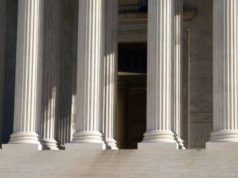
Small business is a very important sector of the United
States economy. In fact, various types of small business entities provide for
the majority of jobs and job growth within the United States. Some may say that
as small business grows, so the does the entire economy.
In order to ensure the healthy growth of small businesses, the Regulatory Flexibility Act was
passed in 1979 to ease the burden on small businesses across the country,
limiting the amount of paperwork needed to be filed with the Federal Government in many cases. However, the business world is not a static
environment and as the world has become ever more globalized, laws have needed to adapt to the changing business climate.
During the Clinton administration, after their National
Performance review, the beginnings of the Small Business Regulatory Fairness
Act (SBREFA) began to be formulated. Later the SBREFA was passed under the
Clinton administration with the goal of reducing costs for small businesses even further and to ensure that
regulatory bodies do not create policies, whether intended or unintended, that
constrain the ability of small businesses to operate within the united States
market.
Under SBREFA, regulatory
agencies need to perform a number of steps in order to enact and enforce a new
regulation. These steps are undertaken by each regulatory body, whether it be in agriculture, the environment, or even banking. The ultimate goal is to
ease financial burdens on small businesses which, unlike a large
company, usually cannot withstand enhanced regulation that would ultimately eat
up their profits and revenue.
For example, at the Environmental Protection Agency (EPA), when a new regulation is being developed, a board is created to examine
the costs of the intended legislature. Members of this board are not only EPA
officials, but members from the Office of Budget and Management as well, along with
other financial institutions within the Government. By
doing this the SBREFA achieves its intended goal of measuring monetary
consequences of the intended regulation.
However, there are times where the regulation does
increase the financial burden of a small business, but it is necessary due to a social imperative in enacting the regulation. This is usually the case within the EPA as their job is to
weigh environmental harms against financial harms. In many cases this
is especially so within the realm of mineral
extraction or the energy sector, as damage will be done to the environment and it is up to the EPA to limit the extent of damage.
The SBREFA takes into account many different factors that
are both weighed and measured to help accommodate the growth of small business.
Even though the Regulatory Flexibility Act was written in 1979, there have been necessary changes as the business market has changed since the law’s inception.
The SBREFA addresses some holes that were not addressed
within the original RFA, not because they were left out but simply because they
were not realized yet. Legislation with regards to the business sector is
reactive in many cases, not proactive. It is very difficult to see where the market will
be in ten years development–wise, so the legislation like the
SBREFA is needed to keep up with changing times.































